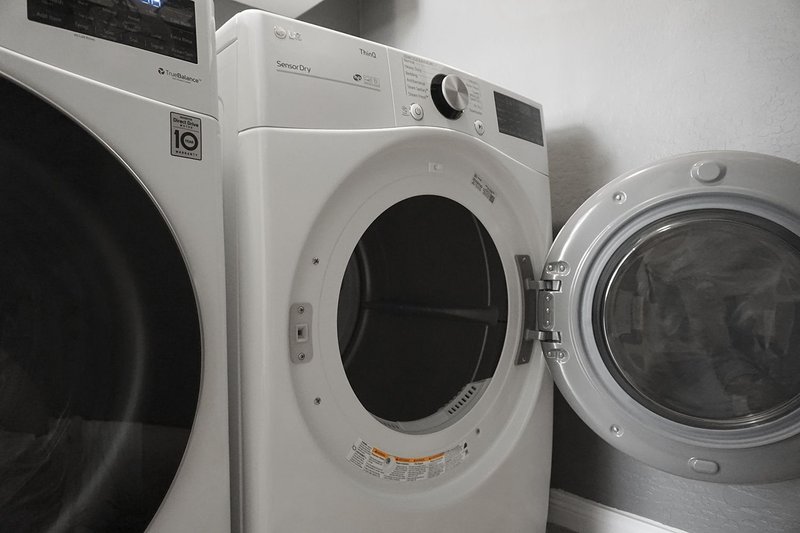
So, what exactly does this error mean? In simple terms, the F2 error code on your LG dryer typically relates to a temperature sensor issue. This sensor plays a crucial role in maintaining the right heat levels inside the dryer to ensure your clothes are dried efficiently and safely. When the sensor is out of whack, the dryer can’t do its job properly, just like how a GPS misguides you if it loses its signal. But here’s the good news: with a few precautionary steps, you can prevent this error from throwing a wrench in your laundry day plans.
Understanding the F2 Error: The Basics
Before diving into prevention methods, it’s essential to understand what causes the F2 error. Essentially, it’s linked to the dryer’s temperature sensor or thermistor. Imagine it like a thermostat in your home that controls the heat levels. When this sensor malfunctions or signals an abnormal temperature, the dryer registers the F2 error to alert you. It’s a built-in safety feature to prevent overheating and ensure your appliance runs smoothly.
A common culprit for this error could be lint buildup inside the dryer’s venting system. Over time, lint and debris can accumulate and obstruct airflow, causing the dryer to overheat or misread the temperature. It’s similar to how a blocked nose can make breathing difficult. Regular cleaning of the lint filter and exhaust duct can significantly minimize this risk.
Another factor could be wear and tear or damage to the sensor itself. Like any other appliance component, the sensor is subject to aging and might occasionally require replacement. Keeping an eye on any unusual noises or performance issues with your dryer can be invaluable in catching these problems early. Identifying these issues before they escalate can save you time and hassle in the long run.
Step-by-Step Prevention Tips
Now that we’ve demystified what causes the F2 error, let’s delve into some straightforward prevention strategies. First and foremost, making it a habit to clean the dryer’s lint filter after each use can work wonders. This simple act not only prolongs your dryer’s life but also enhances its efficiency. Think of it as brushing your teeth regularly to prevent cavities. A clean lint filter promotes optimal airflow, reducing the chances of temperature-related errors.
Next, conducting periodic inspections of the dryer’s venting system is crucial. Every few months, detach the vent hose and check for lint buildup or obstructions. This ensures the dryer can expel hot, moist air effectively. It’s akin to clearing leaves out of a gutter to prevent water backup. If you’re not sure how to do this, consulting your dryer’s manual or hiring a professional can be a wise move.
Furthermore, if you suspect the thermistor itself is faltering, consider seeking a professional assessment. While it might be tempting to use DIY fixes, a certified technician can provide a more accurate diagnosis and replace faulty components if necessary. Investing in professional help can sometimes save you from larger, more costly issues down the line.
Common Mistakes and How to Avoid Them
Many people make the mistake of ignoring warning signs or putting off maintenance tasks. It’s easy to think, “It’s just an error code; it’ll go away.” Unfortunately, neglecting these signals can lead to more severe problems. Picture it like a small leak in a boat – if unaddressed, it can eventually cause a flood. Thus, staying proactive is your best defense.
Another common oversight is using the wrong drying programs for the type of load. Using the high heat setting for delicate fabrics, for instance, can strain the dryer’s heating elements and sensors. Always select the appropriate cycle for the materials you’re drying – it’s like dressing appropriately for the weather to avoid discomfort.
Additionally, overloading the dryer is a frequent error. Cramming in too many clothes can hinder airflow and put extra stress on the motor and sensors. Aim to fill the drum only halfway for optimal drying. It’s much like carrying a backpack that’s too full, which can be tiring and inefficient.
Next Steps and Long-term Solutions
Ready to ensure your LG dryer runs smoothly without those pesky F2 errors? Start by incorporating these maintenance tips into your regular routine. Cleaning, inspecting, and proper usage are your trifecta of prevention. Remember, a small effort today can prevent headaches tomorrow.
For a long-term fix, consider scheduling annual maintenance checks. Just as you’d tune up your car, having a technician evaluate your dryer’s condition can catch potential issues before they become problems. These check-ups are invaluable for keeping everything running in top condition and extending the life of your appliance.
Moreover, stay informed about your dryer model. Explore forums, watch tutorials, or read up on common issues and solutions. Being informed equips you to handle minor hiccups like a pro. With these strategies in mind, you’ll have a dryer that dries your clothes without drama, leaving you to enjoy the fresh, warm feel of laundry done right.